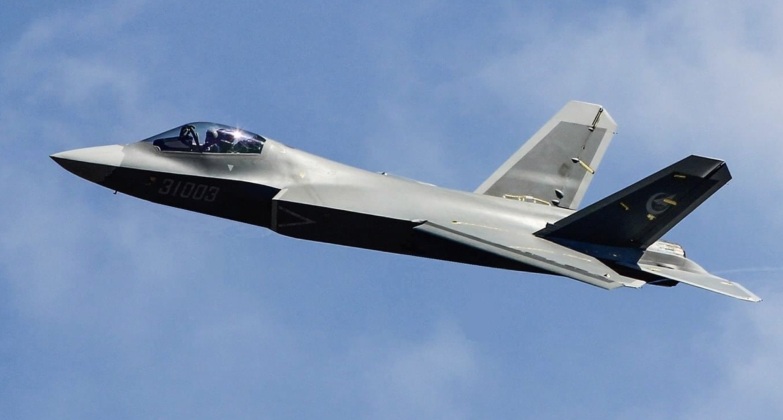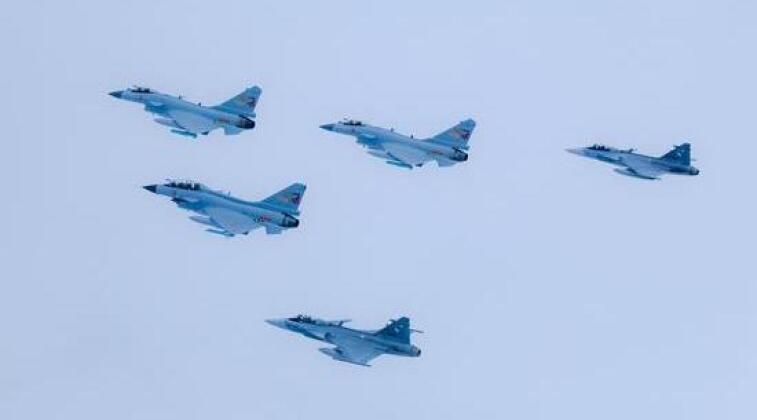News
Will America’s F-35 or China’s FC-31 Be the Thai Air Force’s Next Fighter? Washington’s Export Conditions Will Likely Decide
The Royal Thai Air Force has been widely reported to have an interest in acquiring Lockheed Martin F-35A fifth generation fighters from the United States, with the aircraft expected to replace its ageing F-16 Falcons in service and fly alongside its F-5TH and Gripen C/D lightweight jets. The F-35A was developed specifically as a successor to the F-16, and is one of just two fifth generation fighters in the world both in production and fielded at squadron level strength – the other being the Chinese J-20. In January 2022 Thai Air Chief Marshal Napadej Dhupatemiya said the country was interested in buying up to eight F-35s, with $413 million reportedly set aside for initial purchases. Lockheed Martin’s Senior Vice President for Global Business Tim Cahill stated in February at the Singapore Airshow that while Thai interest had been observed, “nothing official that I am aware of that has come relative to that.” “This will be a U.S. government policy decision. I think there is some promise there, but I honestly don’t know where the U.S. government will come down on that,” he stated, referring to Washington’s longstanding policy of strictly controlling F-35 exports. Whether a Thai purchase will materialise remains highly uncertain, but based on precedents in Washington’s policies for exporting its combat aircraft the possibility can be speculated.

Outside the Western world only South Korea, Japan, Israel and Singapore have gained permission to acquire F-35s, although none of them were permitted to become partner countries in the exclusively Western program despite Japanese and Israeli interest in such involvement. Washington has at times required very considerable concessions from countries to allow them to purchase F-35s, a notable recent example being the United Arab Emirates which suspended talks for a purchase due to American demands which were seen as excessive. This included not only sharply limiting ties with China, but also pledging not to use Chinese telecommunications infrastructure despite its competitive advantages over Western rivals. The U.S. has nevertheless permitted Western countries such as Germany which extensively use Huawei infrastructure to import the aircraft, as well as South Korea which has a 5G network built around Huawei technologies. The United States has imposed strict controls over how F-35s can be operated, including not only the bases they can operate from and when and where they can carry out combat missions, but also over the software of the fighters themselves which has facilitated spying by F-35s and sending of sensitive data back to America.

For the Royal Thai Air Force, requirements for restrictions on ties to China and potentially on the country’s already modern telecommunications and other infrastructure programs could effectively end prospects for an F-35 acquisition. With Thailand only expected to acquire a small number of fighters, unlike the United Arab Emirates which planned to field at least 50, the economic costs of gaining American position to acquire the fighters, aside from the substantial lifetime operational costs of the F-35s themselves which very far exceed those of existing Thai-operated fighters, could be disbarring. As Thailand’s ground forces and navy have increasingly moved away from a reliance on Western equipment to make acquisitions of advanced Chinese weapons systems ranging from VT-4 tanks to Type 054A Class frigates among many other systems, there is a significant possibility that a hard line from Washington on the F-35 could lead the Southeast Asian country’s air force to follow suit.

While Thailand previously considered acquiring armaments from Russia, namely T-90 battle tanks, Western pressure led it to instead turn to Ukraine which, when it failed to meet the terms of its contract to supply T-84 tanks, led it to purchase the Chinese VT-4, which Army officials expressed high satisfaction with, instead of further T-84 units. Threats of Western sanctions should Thailand look to Russian fifth generation fighters means Thailand’s alternative to the F-35 may well come from China, which has on multiple occasions deployed J-10C fighters to the country for exercises. China currently offers a medium weight fifth generation fighter developed under the FC-31 program for export, although its top end heavyweight stealth fighter the J-20 is currently reserved for domestic use only – and in any case would likely be difficult for Thailand to integrate. A third Chinese fifth generation fighter class, likely a lighter single engine jet, has been widely speculated to be under development and could materialise later in the decade with a primary focus on export markets. Whether Thailand looks to China or America for fifth generation fighters remains uncertain, with the latter able to exert very significantly more and consistently doing so to influence the arms import policies of potential clients around the world – including with various threats of sanctions. The nature of Washington’s position on F-35 sales, and the range of conditions imposed, will likely be a leading factor determining the outcome.












